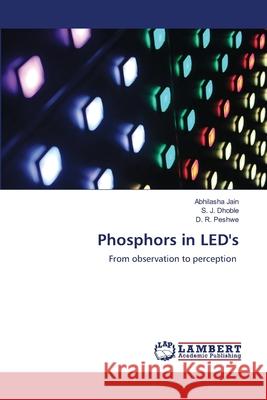Phosphors in LED's » książka
Phosphors in LED's
ISBN-13: 9786202513500 / Angielski / Miękka / 2020 / 124 str.
Organic-inorganic hybrid phosphors doped with lanthanides are gaining widespread attention of researchers due to their significant contribution in display devices and lighting technologies. The fundamental principle governing this approach is based on the suitable design of the precursor host.It is well known that optical properties of nano phosphor become size dependent as structure of the atom is altered by continuous electronic bands to quantized electronic levels. Consequently, due to large surface area, defects are generated which act as non-radiative pathways to the excited electrons and thus decrease their quantum efficiency. To overcome this predicament, one of the most effective methods for the enhancement of luminescence intensity of lanthanide doped nano phosphors is to cover their surface with organic ligands known as capping agents that are capable to prevent agglomeration and passivate the surface defects. Polystyrene, polystyrene sulfonic acid, Mercaptoethanol and sodium hexameta phosphate have been used as successful capping agents during reaction process.The central focus of this research work is to develop systems with enhanced photoluminescence for a longer time.











